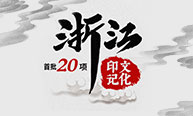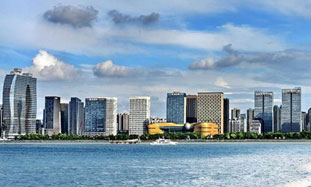Chinese Calligraphy as I See It

Pietro De Laurentis [Photo/WeChat account: culturedialogue]
I first visited China in 1998. Since then I have visited the oriental country numerous times. Of the cities in China, I love Beijing and Shanghai for various reasons and I love Tianjin, Xi'an and Luoyang for their rich historical heritage and cultural wealth. Hangzhou is unique, however, because it gave me enlightenment on Chinese calligraphy.
In the spring of 2019, I visited Shaoxing and attended a ceremony in honor of Wang Xizhi (303-361), a great Chinese master of calligraphy, whom I referred to as China's Da Vinci when I explained the purpose of my visit to my mother. "His amazing calligraphy demands the attention of the world. I will submit my research result and engage in exchanges with international colleagues," I explained.
International and Chinese scholars attended the event. I was engaged as a specialist at a research center there. At the end of 2019 I gave a lecture at Shaoxing Municipal Library. Many people there were curious about my research, mainly because they knew there were few westerners specialized in Chinese calligraphy. After the public lecture in Shaoxing, Sichuan People's Press engaged me to write a book about Wang Xizhi's calligraphy. The book is scheduled to be published in 2020.
When I began studying Chinese calligraphy in Hangzhou in 2000, I had the slightest idea that I was to write books in Italian, English and Chinese about Chinese poetry and calligraphy. The first calligraphy course I took at China Academy of Art in Hangzhou lasted from 2000 to 2001. The second calligraphy course I took at Zhejiang University in Hangzhou lasted from 2004 to 2005. My understanding of China and calligraphy took shape during these two special courses.
I took interest in Chinese calligraphy in 1999 in an Italian university. I had a Chinese calligraphy teacher named Wang Chengxiong, a native of Shanghai. I have been practicing Chinese calligraphy under Wang’s guidance since then. I met Wang and we became friends pretty fast. With him as my teacher I made fast progress in writing Chinese. I had a few Chinese friends who also hailed from Shanghai. When I chatted with them about my intention to study calligraphy in China, they unanimously suggested Hangzhou: Hangzhou is a city of calligraphy and the city hosts China Academy of Art. I knew clearly that I needed to be in an authentic atmosphere to experience Chinese calligraphy.
So I came to Hangzhou in 2000. As an international student of China Academy of Art, I lived in a special dorm near the campus. Back then, Hangzhou was relatively underdeveloped. I bought a bicycle and pedaled around randomly in my spare time. Whenever I started a bike adventure, I picked a road arbitrarily. As I pedaled along, I enjoyed going wherever distractions and attractions led me. I never followed the same road back. I just moved ahead. I felt safe in China and even if I got lost, I could easily find a taxi to get back to the dorm.
The course at the academy was a primary one. What I learned there was the essentials of how to use a brush pen to write. However, this course did not give me enough to write a dissertation on the sources of Chinese calligraphy. I had applied for a Chinese scholarship for writing the dissertation to be submitted and then defended toward the end of 2002 in Italy. I was interested in academic study of Chinese calligraphy, but the course I took at the academy was in another direction.

 Print
Print Mail
Mail
 20 Cultural Symbols
20 Cultural Symbols Why Zhejiang
Why Zhejiang Experiencing high-tech products at WIC
Experiencing high-tech products at WIC Zhejiang Release
Zhejiang Release Zhejiang News
Zhejiang News